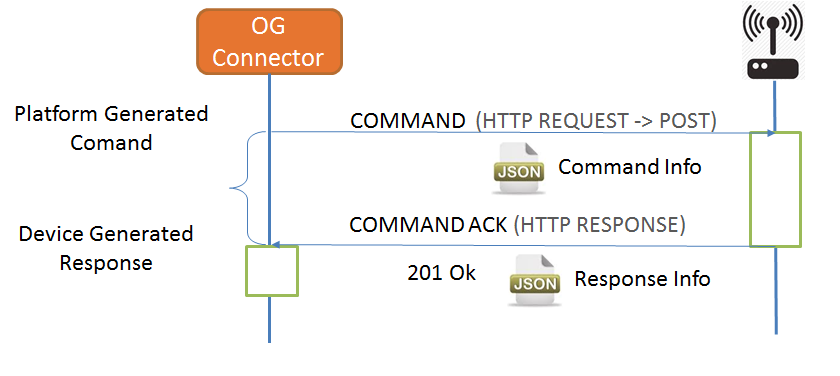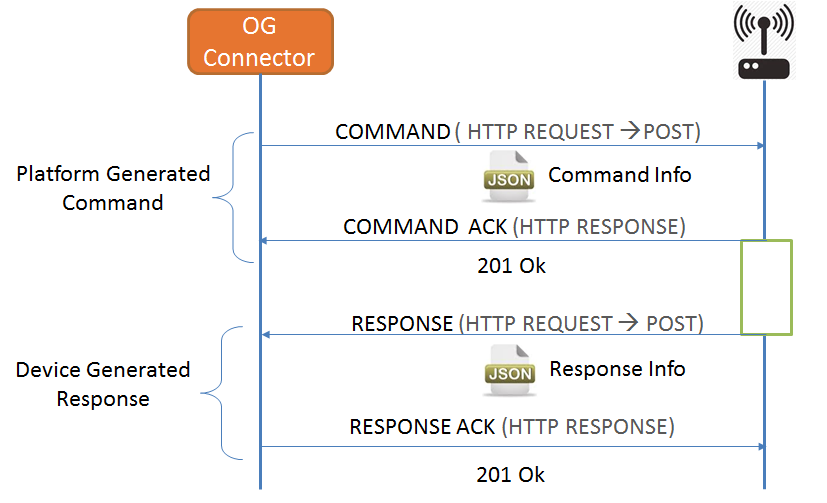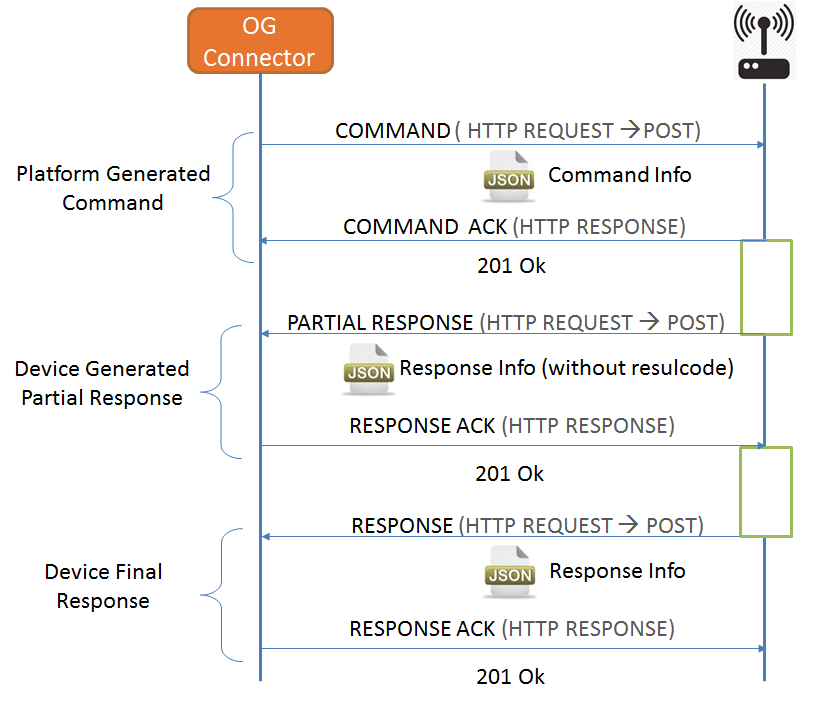Operations driven by platform
Introduction
OpenGate initiates communication with the device, requesting the execution of a specific operation. Upon receiving this request, the device can respond in either a synchronous or asynchronous manner, utilising the HTTP protocol.
It is possible for devices to make this endpoint available for operation execution by OpenGate.
Synchronous
The entirety of the operation is driven by a single HTTP request and response.
Asynchronous
In this instance, OpenGate transmits the operation to the device via an HTTP request, and the device responds with an acknowledgement through the utilisation of an HTTP response. Subsequently, OpenGate is capable of receiving one or multiple HTTP requests transmitted by the device. These HTTP requests can be employed by the device to convey the subsequent steps that the operation necessitates.
For further information on the endpoints exposed by OpenGate for the management of asynchronous operation communications, please refer to the section on operations driven by device.
Simple response
The device transmits a sole response message in order to respond to the request.
Multiple responses
It is possible for the device and a final response at the conclusion of the sequence to transmit a number of partial responses.
Operation structure
Simple request/response
The operation is comprised of a single request and a single response, which together constitute its entirety. There are no intermediate steps. It can be executed in either a synchronous or asynchronous manner, with the latter resulting in a simple response.
Multi-step response
In order to facilitate the monitoring of the operation, it is necessary to define a list of steps. The device is capable of providing information regarding these steps in a single response or in a series of partial responses until the final step is reached. The device can respond using either a synchronous or an asynchronous (simple or multiple responses) flow strategy.
Response structure
In regard to the JSON format, there is no distinction between synchronous and asynchronous responses.
- Synchronous: The device incorporates the JSON payload into the HTTP response.
- Asynchronous: The device incorporates the JSON payload into a new HTTP POST, which is initiated by the device itself.
API specification
Device HTTP ports
- Unsecure (deprecated):
1123 - Secure:
11235


